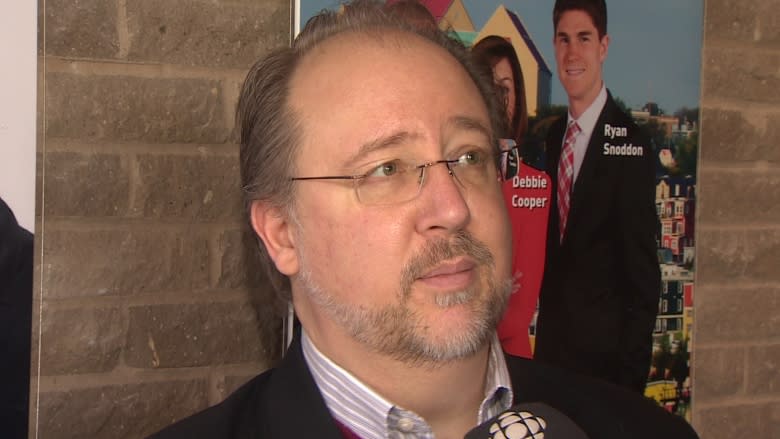Azzo Rezori: Why rare diseases deserve a broad-based response
In the second half of this coming week, a couple of hundred Canadians from coast to coast will be gathering in Toronto to chart the future of how the country's health system handles people with rare diseases.
Among the delegates will be Simon Lono of St. John's.
Lono was diagnosed with primary myelofibrosis two years ago, a disease in which abnormal blood cells and fibres build up inside the bone marrow. The marrow's ability to produce normal blood cells is compromised. Among the more common symptoms are chronic pain under the ribs and extreme fatigue.
The fact that myelofibrosis is a rare disease made Lono's road to treatment even more complicated.
The diagnosis alone took a year and a half to arrive at.
The kind of expert treatment Lono feels he deserves is only available in Toronto. While the treatment there is paid for by MCP, Lono has to dig into his own pocket for his travelling expenses.
The cost of the drug he's on is $5,200 a month. Until recently the medication was not on the approved list of the province's prescription drug program. Luckily his wife's health insurance stepped up to the plate.
Lono's story is typical. Thousands of Canadians and their families face similar hurdles and worse.
Not necessarily rare at all
"Rare diseases are not rare," is a popular saying among advocates for better treatment.
Rare diseases are estimated to afflict between 6 to 8 per cent of the Canadian population.
Around 7,000 different diseases have been listed, from Aageneas syndrome, a genetic disorder which causes swelling of legs and liver problems, to zygomycosis, a fungal infection which destroys tissue.
Many of the victims are children of whom one in three won't see their fifth birthday.
Federal government assurances that help for patients with rare diseases is on the way go back as far as the late 1990s. But delivering on those has been slow.
The establishment of a catastrophic drug plan was one of the recommendations in 2002 by the Romanow Commission on the Future of Health Care in Canada. Nothing more was heard of it until two years later, when premiers from across the country agreed to and promised a National Pharmaceutical Strategy.
It would take another two years to set up a task force.
Not until 2006 did the federal government announce its Orphan Drug Framework for the "designation, authorization and monitoring" of the special and often prohibitively expensive drugs used for the treatment of rare diseases.
Shamed into action
Mark Gary Embrett of McMaster University has looked into the government's reason for coming up with the framework when it did. He concludes the government did not act voluntarily but got shamed into action by the Canadian Organization for Rare Disorders (CORD).
CORD, he says, waged a successful campaign telling story after story of needless suffering against which the government's usual argument that the cost was too high and the number of afflicted people too low stood no chance.
CORD chief executive officer Durhane Wong-Rieger is the first to give the government credit for coming as far as it has, even if it took some pushing. But she says the orphan drugs are just one piece of a much larger picture.
And that's not the first time the government has heard that.
In 2008, North Vancouver MP Don Bell introduced a private member's motion in the House of Commons calling for a Canadian Rare Diseases Strategy. The motion passed, meaning government members had to have voted for it. Yet four years later, Samir Gupta, Director of Rare Lung Disease Research at Toronto's St. Michael's Hospital, still found himself deploring the lack of action.
No measurable action
"No sustained debate, feasibility assessment, or measurable government action has since materialized," he commented on the web site Open Medicine.
Just last year, former Ontario Health Minister David Caplan was quoted as follows by the Toronto Star: "Canada is one of the only developed countries in the world that does not have a national rare disease strategy. This needs to change."
Wong-Rieger says if the government can't come up with a strategy, CORD can - and will when it holds its Rare Disease Day 2015 conference in Toronto next week.
The highlight of the conference will be CORD's own proposal, put together after extensive consultation with everybody involved, from patients, to physicians, to researchers, to public health officials.
With the proposal will also come an action plan to put another round of pressure on the federal government. Not to be discouraged by the government's foot-dragging so far, Wong-Rieger sees an opportunity. "The one thing about being late, you can see what others have done."
What others have done, she points out, is impose strategies from above, and that has had its own challenges. Canada, she says, is in a unique position to build a new way from the bottom up.
It would require attitude change across the board, she concedes, but it could also make Canada a leader again.



